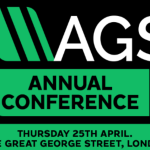HMRC Loss on Ignition Method
In order to qualify for the lower rate of landfill tax applicable to soil materials, the fines must be samples and the organic content determined using the Loss on Ignition method defined in Landfill Tax Notice LFT1. Samples with results below 10 % qualify for the lower rate of landfill tax.
Sampling:
- The fines sent for testing must be representative of the whole quantity of waste material for disposal;
- A minimum of 6 sub-samples, selected at random, must be thoroughly mixed to form a composite sample of 1 kg;
- It is mandatory for laboratories to use the methodology prescribed by HMRC in the guidance note and it is not acceptable to use routine LOI methods.
Analysis:
- 1 kg of sample is air dried (30 – 50 °C)
- Content classified as > 20 mm particle size and conforming to Group 1 or Group2 in the Landfill Tax Order 2011 is removed and recorded as Stones > 20 mm
- The air dried sample is then cone and quartered to produce a 200 g sub-sample
- The sub-sample is then ground to a particle size of 2mm or less from which a 20 g sample is heated first to 180 °C and then to 440°C for a minimum of 5 hours.
Results
The LOI % is calculated as the loss on ignition between 180°C to 440°C as a percentage of the dried material taking into account the mass of removed (stones > 20 mm)
References





